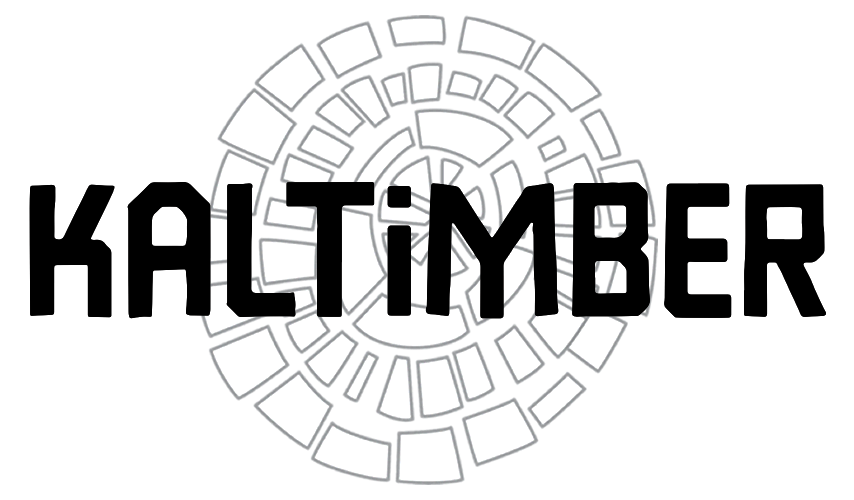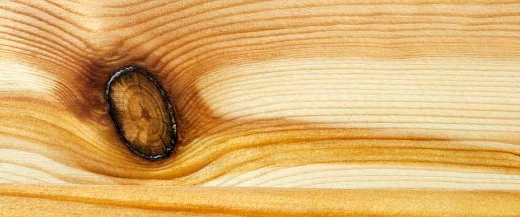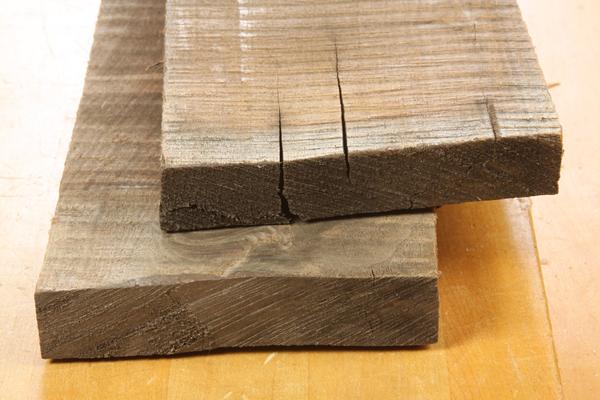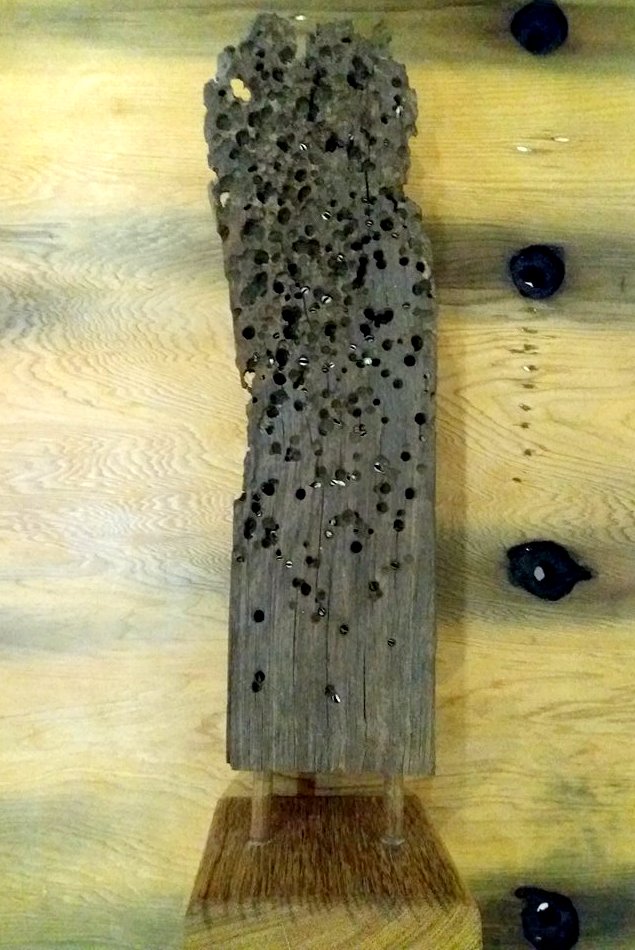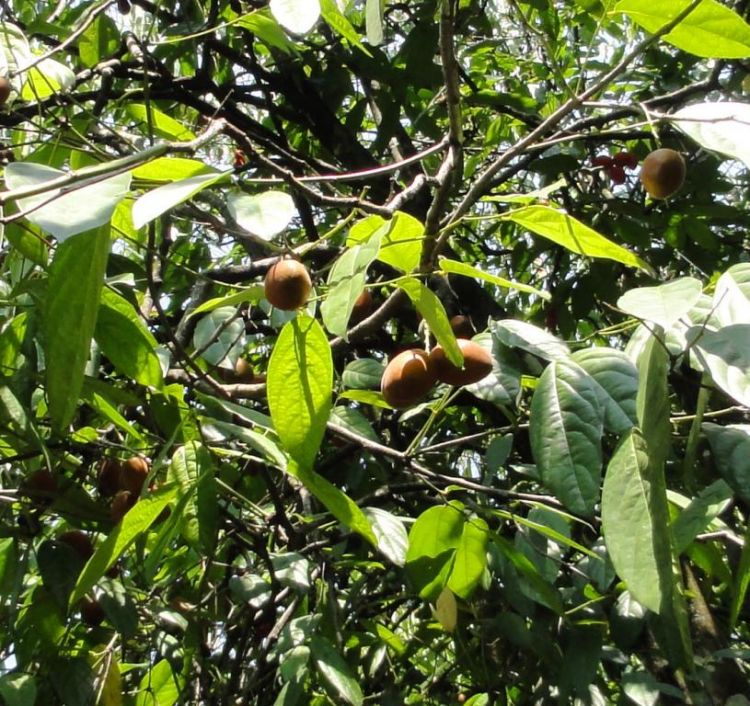How To Spot Fake Reclaimed Wood
How to Identify Lumber Defects
It is every persons wish to use the best lumber they could find for their woodworking project, however it is not easy to identify which lumber has defects and which not. Sometimes, there are minor factors that we ignore and later that same minor causes a major damage. Therefore, to help you guys ease some pain; here are a few common lumber defects that you can identify during your next woodworking project.
Wood Knots
Everyone must have seen a wood knot on a lumber; these are the most common defects you can find in lumber. Although, they don’t particularly cause any major damage, they do prove difficult for woodworkers using hand tools. Also, wood knots fall out in time; mixing epoxy with sawdust is the easiest way to solidify the knot. However, it is still considered better to avoid them altogether.
Sapwood with Insect Holes
Sapwood is the inside part of the tree that is responsible for transportation of water and minerals in trees. Hence, this part of the tree is very nutritious and a perfect place for insects and worms to live their lives. Therefore, make sure that your wood is free of any insect holes and worms.
Common Movement Defects
CF our articles from February 27, 2017
These defects generally occur due to lack of proper storage and piling techniques. When wood lumber is not stacked, sealed and dried properly, it tends to bend in all directions and is hence called Movement defects. There are mainly four types of movement defects namely Cup, Twist, Bow, and Crook.
Cupping and Twisting occurs when the wet boards aren’t properly stacked. In cupping, the board turns into a cup like shape, while twisting is where the board ends are twisted in different ways. It takes a lot of time to plane out the boards which are cupped or twisted and so it is not really recommended to buy them. Make sure you examine the boards you are buying properly to avoid any boards that fall in this category.
On the other hand Bowing and Crook are similar to each other. In bowing the boards change their figure to a bow like shape and in crook the same thing happens, but the arc is made the other way. Sometimes bowing can be much difficult to fix than cupping and twisting while fixing crook is a lot easier.
Wood Checking
Checking is a situation where the lumber dries too quickly or unevenly. In this case, the dried boards generate cracks that travel along the board and are hence, best to avoid. If you are cutting your own wood, then checking can be prevented by using a good quality wood end grain sealer.
Knowing the common defects found in wood lumber can help you pick the right boards for your woodworking. All the defects mentioned above are commonly occurring wood defects and anyone with a little practice can identify them. We provide the best kind of wood you can find with minimum possible defects and nicely chopped even boards.
All the above issues are common sight in the reclaim wood industry. Luckily our Ulin ironwood suffer no borer and only little movements. We have adapted our procedures and techniques to work with the material and give it the second life it deserve for you to enjoy forever.
You should contact us to get more details.
Reinventing Materials: See through the Wood
A French architect managed the Tour de force to make translucent wood. A feat obtained by removing the lignin from the fiber and injecting into its micro cavities a bio-monomers. This hybrid material is also three times more rigid than its natural equivalent and, icing on the cake, at the same time can't rot. Currently in pre-industrial research phase, this treatment proposed by the company Woodoo opens up new perspectives to the use of wood in construction as in decoration. Especially since it can be applied to essences considered as "non-noble".
Looking forward to see through Ulin ironwood in 2018!
Translucent wood
Beauty in waste
Kaltimber is a hardwood decking and flooring specialist company which aim to provide high quality standards of production and finished goods. Our wood has been reclaimed or salvaged from ethical and legal sources. Hardwoods take thousands of years to grow and they deserve our utmost respect; as such we have a ‘full circle’ production, where we reduce waste and utilize our woods to the max.
With that in mind we aim to reuse as much as possible anything available. A good example is the piece in the picture here under. This a deco item made of a 4x15x20cm feet (leftover from a production - reclaimed from a bridge in East Kalimantan) and a 4x15x55cm board eaten by clams after many years serving as underwater structure of a harbor.
Wood inspires us with unique creations, we do not constrain wood to our ideas
Your decking is a great drug!
Dayak ethnic group is the indigenous people of Kalimantan Island and mainly live in a remote area. Dayak ethnic group in West Kalimantan is divided into 151 subethnic groups and their languages are classified into 168 groups. Since their residential areas are isolated from other villages, they depend on their environment, especially, the forest. It functions as a place to meet their basic needs because they have the knowledge how to utilize natural resources. Especially, plants have been used as medicine to treat diseases. Therefore, medicinal plants are known as their local wisdom and survival knowledge related to environment. Nowadays, the utilization of medicinal plants is facing several threats due to the scarcity of this knowledge and forest condition. Generally, this knowledge of the utilization of medicinal plants is not well documented since it is orally transferred from generation to generation. While younger generation accepts new culture from outside of their village, the knowledge of medicinal plants is fading. Forest conversion also contributed to the decreasing number of medicinal plant species. Approximately 21.51% of 9,125,486 ha of forest that functions as the main habitat of medicinal plants in West Kalimantan have been lost since 2010. Therefore, to conserve the knowledge of medicinal plants, it is necessary for the Dayak people to use them continuously to treat diseases. The documentation of medicinal plants utilization of several Dayak sub-ethnic groups is already reported. Dayak Uud Danum means a Dayak sub-ethnic group who lives in the upstream areas of Ambalau and Serawai river of Sintang Regency. In Dayak Uud Danum community, people use 95 species of medicinal plants. One of them, Tebelion (Eusideroxylon zwageri) has been used to treat diseases such as diarrhea, fever and allergy as the decoction of leaves by hot water. These diseases often caused by infections induce inflammation. Therefore, these medicinal plant is suggested to have anti-inflammatory activity. Inflammation is one of causes of diarrhea and plays an important role in the allergic disease such as delayed-type hypersensitivity (DTH). Diarrhea is difficult to be fully recovered in a patient with an inflammatory bowel disease. Prolonged inflammation of intestine may lead to the increasing risk of colon cancer. Not only in cutaneous skin infection, but also in patients bearing transplanted tissues and tumors, DTH must be considered. Since both IFN-γ and TNF-α are involved in the inflammation of DTH and colon epithelial cells, it is useful to examine the anti-inflammatory effects of medicinal plants on DTH and the inflammation of colon epithelial cells. E. zwageri has anti-melanogenesis activity (Arung et al. 2009). The activity of their plant extracts was reported.
Medicinal plants have been used to treat diseases caused by the malfunction of the immune system. Many reports have been published to prove that chemical compounds from medicinal plants have immunosuppressive effects. Currently, it is well known that secondary metabolites from natural products such as medicinal plants have a broad spectrum of biological activities, and the anti-inflammatory activity is one of them. Flavonoid group, one group of secondary metabolites, has anti-inflammatory activity and is used to develop a new type anti-inflammatory agent. Recently, E. zwageri is identified to have bioactive compounds through phytochemical screening. It is reported to have alkaloid, phenolic, flavonoid, saponin and steroid compounds. Among these medicinal plants used in this study, there are various bioactive compounds that might contribute to the suppression of ear thickness in this model of DTH response. It is also conceivable that secondary metabolites of medicinal plants may have anti-inflammatory activities and affect to several pathways of various phases of inflammation. Presence of potent bioactive compounds such as phenolic and flavonoid compounds may contribute to antiinflammatory activities.
Inflammation has an important role as one of natural protection mechanism and it has a dual nature like a double edged sword. Over production of several inflammatory mediators leads to a chronic disease. Therefore, in order to explore anti-inflammatory reagents from natural products, various criteria must be applied to screen medicine. It is well known that many indigenous people around the world use medicinal plants as anti-inflammatory medicine to treat several diseases. In West Kalimantan Indonesia, although government has been providing adequate health facilities and modern medicines, some people who live in poverty or in remote areas from government health facilities still rely on traditional medicinal plants to treat diseases such as fever, allergy, and diarrhea. Dayak Uud Danum, indigenous people of West Kalimantan, Indonesia is one of the communities who still use and preserve knowledge of medicinal plants as their local wisdom. Through an ethnopharmacological approach, activities of many bioactive compounds from plants will be determined. Although E. zwageri has anti-inflammatory activities in term of suppressing delayed-type hypersensitivity, further experiments are necessary to determine the mechanisms of potential plant extracts to regulate the inflammation.
Additional info;
Although the seeds are poisonous, the fruit and seeds have medicinal uses, and are used locally to treat swellings. Seed extract was shown to have anti-melanogenetic properties, indicating a potential for use in skin-whitening cosmetics. The screening methods used were melanin formation inhibition assay using B16 melanoma cells. The extracts of Eusideroxylon zwageri (seed), showed DPPH radical-scavenging activity of more than 70 percent at 100 microg/ml and extracts of E. zwageri (seed, 100 microg/ml) strongly inhibited the melanin production of B16 melanoma cells without significant cytotoxicity. These findings indicate that this plant from Central Kalimantan are potential ingredients for skin-whitening cosmetics if their safety can be confirmed.
Source: Kuroshio Science, CABI Encyclopedia of Forest Trees, Journal of Natural Medicines v. 63(4): p. 473-480, 2009.
Termites vs Ulin (Kalimantan-Borneo Ironwood)
Termites craving for wood but incapable of eating it reluctantly carve our concrete!
Reclaim Recycle Recycle Reclaim….
Definitions
Reclaim: to recover (useful substances) from waste products
Recycle: To recondition and adapt to a new use or function
According to these definitions reclaiming is the action to recover material, such as solid hardwoods in our Kaltimber operations, while recycling is the process of transforming it into something else, in our case flooring, decking, furnitures, B2B objects and others.
Using reclaimed wood is one of the purest forms of recycling in the construction industry. Demolishing one structure carefully, and then using the parts to build new ones, can have many advantages. For one thing, new lumber isn't required, so new trees don't have to be cut. For another, reclaimed wood may not have to be shaped, only transported, which saves on time and labor costs.
Consider that; it’s not just wood, it’s a wooden slice of history.
